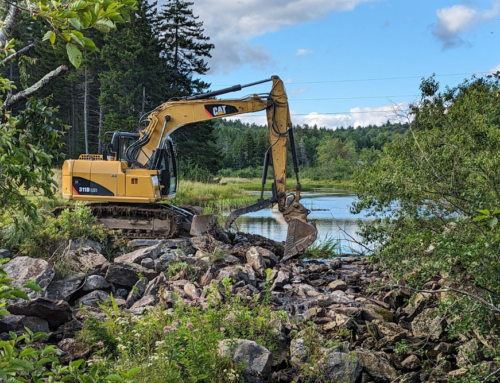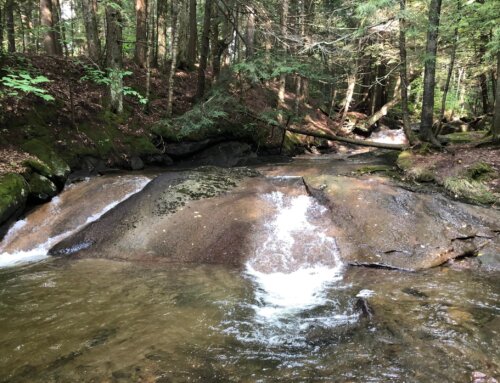Colebrook, New Hampshire – The Nature Conservancy in New Hampshire (TNC NH) and the Connecticut River Conservancy (CRC) recently completed the largest floodplain forest restoration project in the state’s history. More than 3,000 trees were planted on fourteen acres in the floodplain along the Connecticut River. The project is the largest restoration project to date in an ongoing effort to restore floodplain forests along the Connecticut River.
Floodplain forests are low lying areas along rivers that help alleviate the effects of catastrophic flooding downstream by slowing down flood waters and providing an area for sediment to be deposited. The Connecticut River system has seen a dramatic decrease in the abundance of floodplain forests as many were cleared for agricultural and other development over the years. The goal of the Colebrook restoration project is to restore vegetated riparian buffers providing wildlife habitat and clean water, while reducing flood risk in the upper Connecticut River.
“Floodplain forests along our major rivers have been largely converted to other land uses, but we know that they are critical for protecting water quality, helping to attenuate floods, and providing important wildlife habitat,” said Jeff Lougee, Director of Stewardship and Ecological Management with The Conservancy in New Hampshire. “With extreme precipitation events increasing due to climate change, restoring floodplain forests becomes more important. We’re proud to have worked on this project, which is the largest floodplain forest restoration project completed in NH.”
The site of the restoration project is a former farm field overgrown with reed canary grass and other invasive, non-native plants that had to be removed prior to the planting. TNC NH selected CRC to implement the project and monitor its success. 3,000 silver maple and 50 Dutch elm disease (DED) resistance American elm trees, which were purchased from the Intervale Conservation Nursery in Burlington, VT, were planted by CRC and a crew from the Northwoods Stewardship Center. The five foot tall native trees will help jump start the recovery of this floodplain forest.
The Nature Conservancy acquired the property, located roughly three and a half miles north of downtown Colebrook, in 2017 and recently transferred it to the State of New Hampshire as part of the Connecticut River Drivers Wildlife Management Area. TNC NH secured funding for the restoration project from the State of New Hampshire’s Aquatic Resource Mitigation Fund (ARM), the Upper Connecticut River Mitigation Enhancement Fund (MEF) administered by the New Hampshire Charitable Foundation, and a private donor.
Fritz Gerhardt, CRC’s Conservation Scientist, oversaw the planting project. “Not only did this project allow The Nature Conservancy of New Hampshire, New Hampshire Fish & Game, Connecticut River Conservancy, and NorthWoods Stewardship Center to strengthen our partnership, but it also created a large block of restored floodplain forest on both sides of the Connecticut River in New Hampshire and Vermont to protect important fish and wildlife habitat, water quality, and flood resilience.”
The Nature Conservancy has spent more than six decades protecting nature for the benefit of people and wildlife. In New Hampshire, this includes helping protect more than 280,000 acres of the state’s most important natural landscapes. TNC NH has led the way in rebuilding oyster reefs and restoring floodplains and has collaborated with business leaders, communities and legislators to develop innovative solutions to New Hampshire’s biggest environmental challenges. To support their Future of Nature campaign, go to www.nature.org/nhfuture or contact Susie Hackler at 603-224-5853.
The Connecticut River Conservancy collaborates with partners across four states to protect and advocate for your rivers and educate and engage communities. CRC brings people together to prevent pollution, improve habitat, and promote enjoyment of your river and its tributary streams. Healthy rivers support healthy economies. To learn more about CRC, or to join the effort and help protect our rivers, visit ctriver.org.
###








